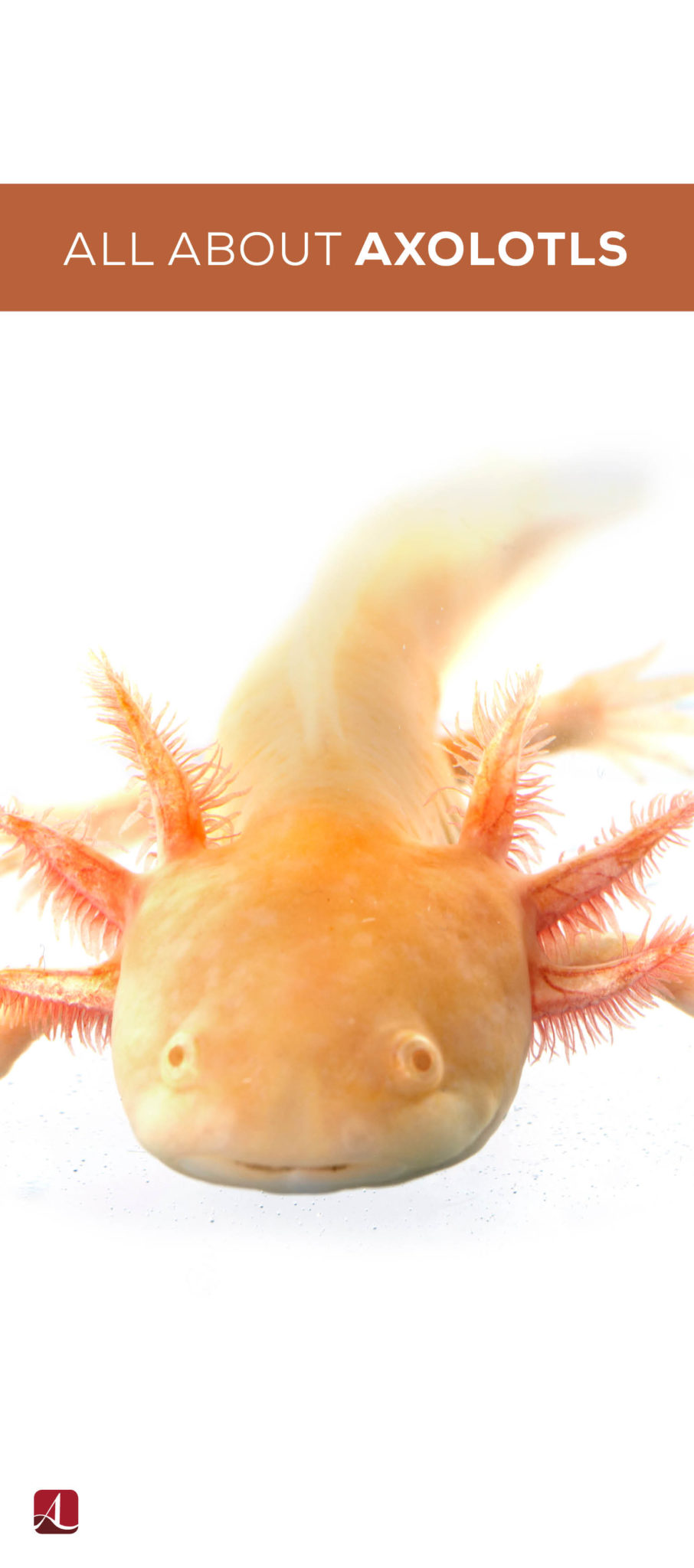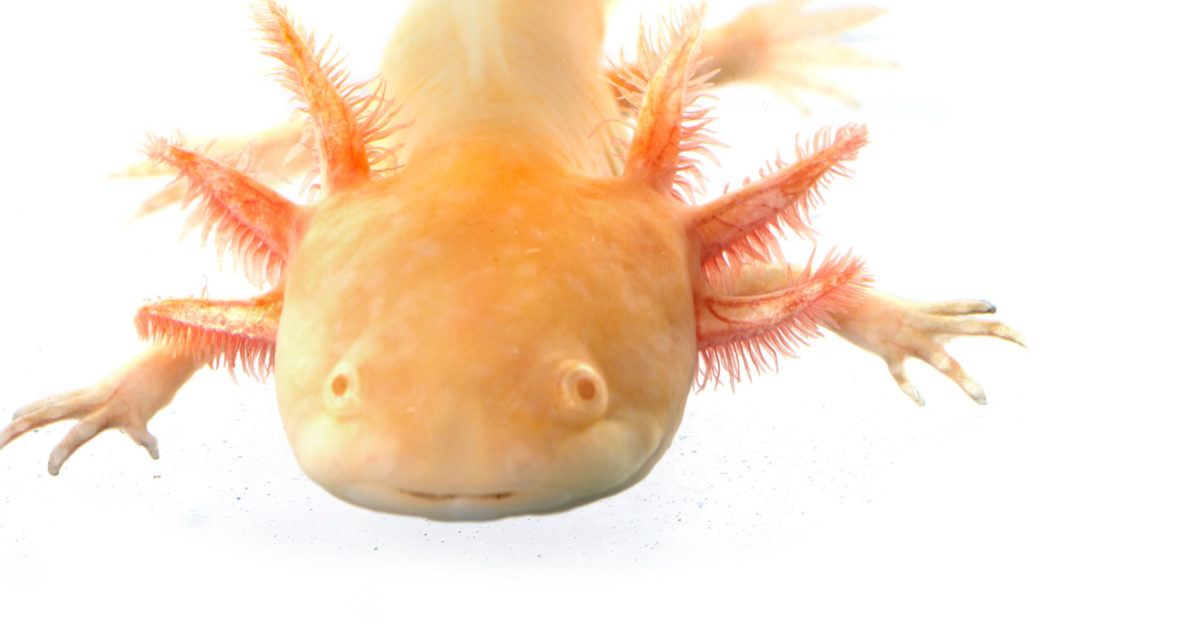All About Axolotls
An axolotl may not be a snuggly pet, but these little amphibians with their perma-smiles are entertaining to watch and relatively low maintenance.
How the heck do I pronounce this?
Axolotls (ACK-suh-LAH-tuhls) were named after Xolotl, the Aztec god of fire and lightning, who could shape-shift into a salamander. The word “axolotl” translates to “water monster.”
What is it?
The axolotl is a salamander native to the lakes and canals of Xochimilco in the southern part of Mexico City. This amphibian feeds mostly on small fish, worms, insect larvae, and tiny crustaceans.
Are all axolotls pink?
Actually, most axolotls, especially ones found in the wild, are greenish-brown or black. The pink and white ones are called leucistic, which is a condition of reduced pigment. Leucistic axolotls descended from a mutant male that was shipped to Paris in 1863.
How do they breathe?
Those feathery antlers on either side of their head are actually gills that provide the axolotl with oxygen. Adult axolotls have lungs, but they still rely primarily on their gills to breathe.
What is their life span?
They can live for about ten to fifteen years.
How do I keep one as a pet?
They thrive best on their own in a fish tank that’s at least fifteen to twenty gallons in size. Keep their water cool and the light dim. Axolotls are carnivores and can be fed things like brine shrimp and blood worms. They are illegal in some states, due to their classification as exotic wildlife, so check your local pet laws.
If they are a critically endangered species, why do so many people have them as pets?
Axolotls in the wild are facing habitat loss, pollution, and the introduction of invasive predatory species like tilapia and carp. It’s estimated there are now fewer than 1,000 of them in the wild. However, they do well in captivity and are often studied for their unique characteristics.
What kind of unique characteristics?
They are neotenic, meaning they retain their juvenile traits. They have been dubbed the Peter Pan of salamanders because they rarely grow out of their aquatic phase to begin life on land. They can also regenerate their limbs, tails, organs, parts of their eyes, and even portions of their brain.






















